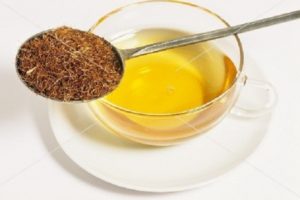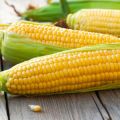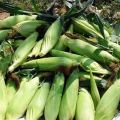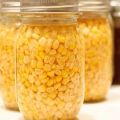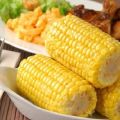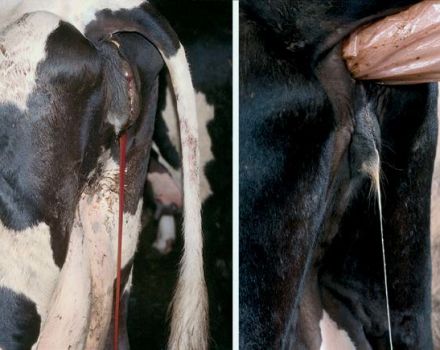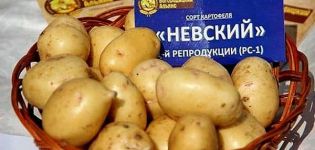Description of red corn, features of cultivation and care
Red corn is a rather exotic plant in the gardens of our country. Even not all summer residents know that such a variety exists. But she is already more than 7 thousand years old. This plant was first grown and consumed in the Andes. The ears were eaten and used as a dye for drinks, food, alcohol. This corn gave a beautiful flavor to the famous Mexican alcoholic drink called Chicha Morada. For a very long time it was considered sacred, its abuse was recognized as a grave sin.
Features of varieties of red corn
It is maize that America owes to the development of agriculture. Among the famous Maya tribe, the god of corn was central to their religion. Therefore, the best varieties of red corn, which is a representative of maize, were bred in America. In Mexico and Peru, this variety occupies an equal position with ordinary corn.
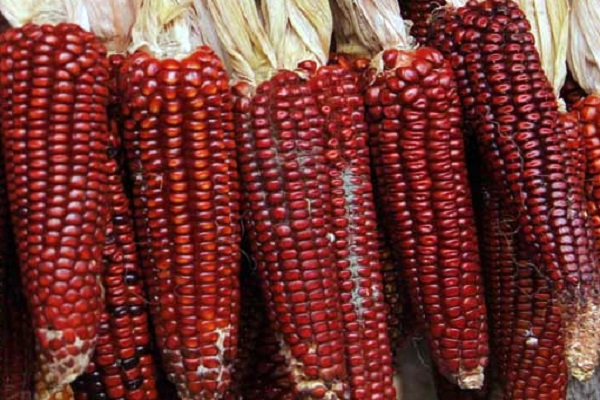
There are already many varieties of red corn in our country, every year summer residents pay more and more attention to it due to the mass of useful properties. The following deserve special attention:
- Early pink glow.
- Oaxacan red.
- Strawberry.
- Red Arrow.
- The miracle cone is red.
- Ruby garnet.
- Bloody butcher.

Early pink shine is a representative of the very early varieties. The ears ripen 60 days after germination. Plant height up to 1.5 meters. The length of the cob is up to 15 cm. The grains of this red corn are sweet, not too large. The yield is high. After boiling it has the highest taste.
Oaxacan red is not only tasty, but also medicinal. The plant grows to a height of 2 meters, the cobs ripen 3 months after planting. Head length up to 25 centimeters. The grains are small, with a high content of nutrients. Suitable for processing into flour or cereals. After boiling, it tastes great.
Strawberry red corn belongs to the mid-season varieties. Plants reach 1.8 meters in height. The length of the cob is up to 22 cm. The grains are similar to rice. Strawberry is used to make cereals, flour, and are used as feed for birds and animals. If the crop is harvested at the stage of milky-wax ripeness, then boiled cobs will be very tasty, sweet and juicy.
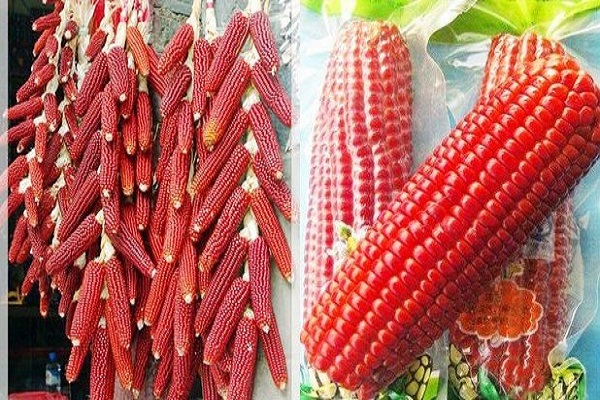
The red arrow, originally from China, belongs to the early maturing varieties of red maize. The plant grows up to 1.5 meters. The yield is very high, up to 5 large ears are formed on each trunk. The grains are black-burgundy-red in color, slightly elongated. Suitable for making popcorn and flakes.
The miracle red cone is another native of China. A magnificent early ripe variety up to 1 meter high, bushy. One plant can form up to 10 pineal cobs up to 13 centimeters long.The grains are small, dark red at maturity. Used maize with red kernels for making popcorn and flakes.
Ruby pomegranate is a variety developed by Russian breeders. The height of a powerful plant is up to 2.5 meters. The cobs are large, up to 30 cm long. On each trunk, 2-3 heads of cabbage are formed. The grains are also quite large, resembling a horse's tooth in shape. At maturity, their color is dark ruby.
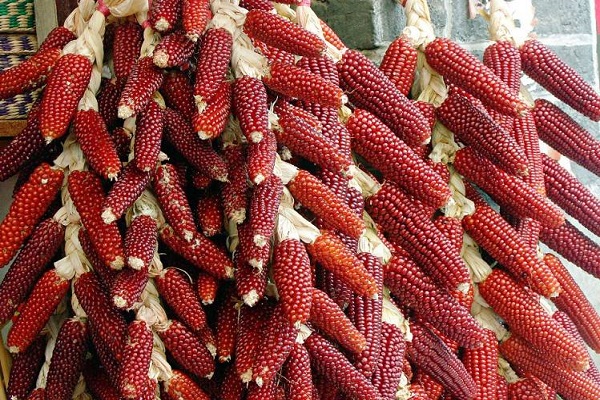
The Bloody Butcher is a truly unique variety of red corn. The purple color in which its grains are painted is very rare in the plant world. He says that the product is high in antioxidants. These substances help slow down the natural aging process in the body, and also prevent the development of many diseases.
It is because of this that doctors called red corn a pill for all diseases. With its help, you can cope with tumors in the digestive organs, strengthen blood vessels, normalize sugar content, and stabilize blood pressure. This variety is early maturing. The plant reaches a height of 1.6 meters, the length of the cob is up to 30 cm. The grains have a very sweet taste. On one plant 2-3 heads of cabbage are formed. It is good to eat boiled.
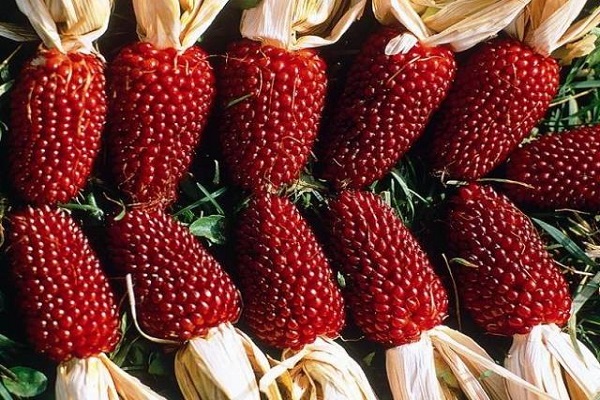
Growing features
To grow maize, you need to choose a well-lit area with fertile soil. Corn has a shallow root system and therefore needs good wind protection. Sowing seeds is started no earlier than a couple of weeks after the last frost has passed. The soil must be warmed up to at least 13 ° C. If an earlier sowing is required, then it is carried out directly under the film.
The beds where it is planned to plant red corn must be pre-processed and prepared. For this purpose, for every 30 running meters of the site, 3 kg of organic fertilizers are applied. When planning plantings, it should be borne in mind that red maize is pollinated by the wind, therefore it is planted not in one long row, but in several rows one after another. The distance between the rows is left 0.6 meters, and between the plants - 25 cm.The depth of planting of the seeds is 5 cm.
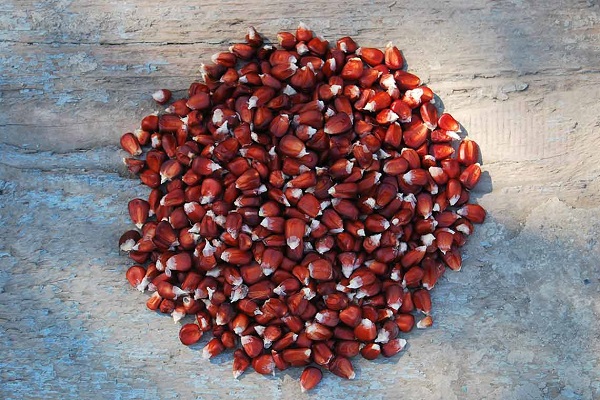
After sowing, it is recommended to cover the beds with agrofibre or other covering until shoots appear. Otherwise, the birds may peck out the unsprouted grains of red corn. In order to be able to harvest longer, planting is done at intervals of 2 weeks. Planting of several varieties with different ripening periods is practiced.
It must be remembered that at low temperatures and unfavorable conditions, red corn seeds tend to rot in the soil. To prevent this, experienced gardeners are advised to pre-soak the seed. As soon as the sprouts hatch, he is immediately sent to the garden. Large roots should not be allowed to form. In this case, it will be very easy to damage them, and the plant will not grow well.
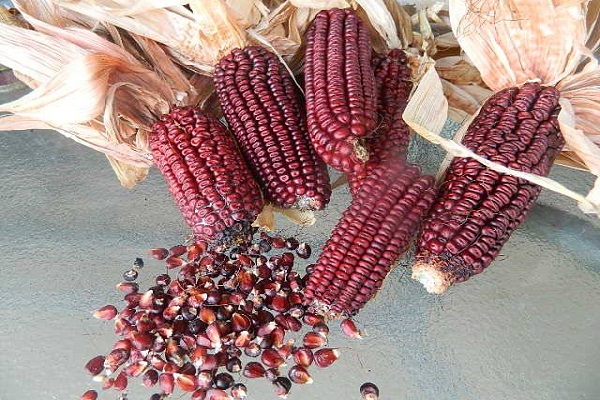
Care features
Watering red corn is recommended to be carried out at the root, especially during the flowering period. If you water the beds from above, the pollen is washed off and the occupancy of the cob will be poor. Watering frequency depends on weather conditions. If the weather is rainy, then the beds can not be irrigated at all, and in drought it is worth focusing on how the topsoil dries up. Before the plants throw out their panicles and start blooming, they are fertilized with a fish emulsion every couple of weeks.
Nitrogen fertilizers are applied twice a season. The first time the procedure is carried out when the corn has not reached half a meter in height, and the second time - when silk begins to appear on it.
It is constantly required to remove weeds from the red maize beds.To reduce their appearance, you can mulch the soil with cut grass or prepared compost. This will help prevent the soil from drying out and will help retain moisture.
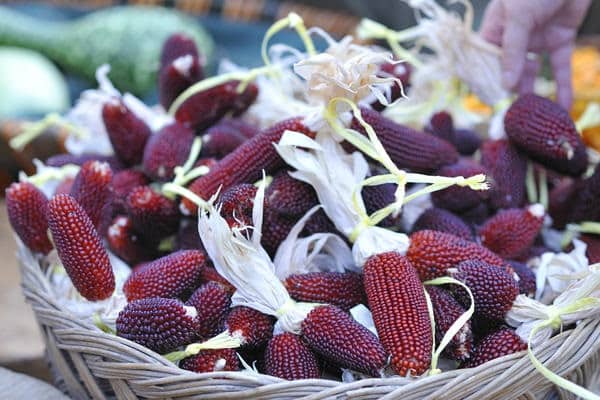
Reviews of gardeners indicate that red corn requires a little more attention to itself than the usual white or yellow. But it contains many substances valuable for the human body that help fight diseases and increase immunity. The unusual appearance of red corn and its excellent taste allow chefs to create culinary masterpieces from it. That is why it is worth allocating a place in the garden plot and planting a plant so exotic and unusual for our summer residents.

